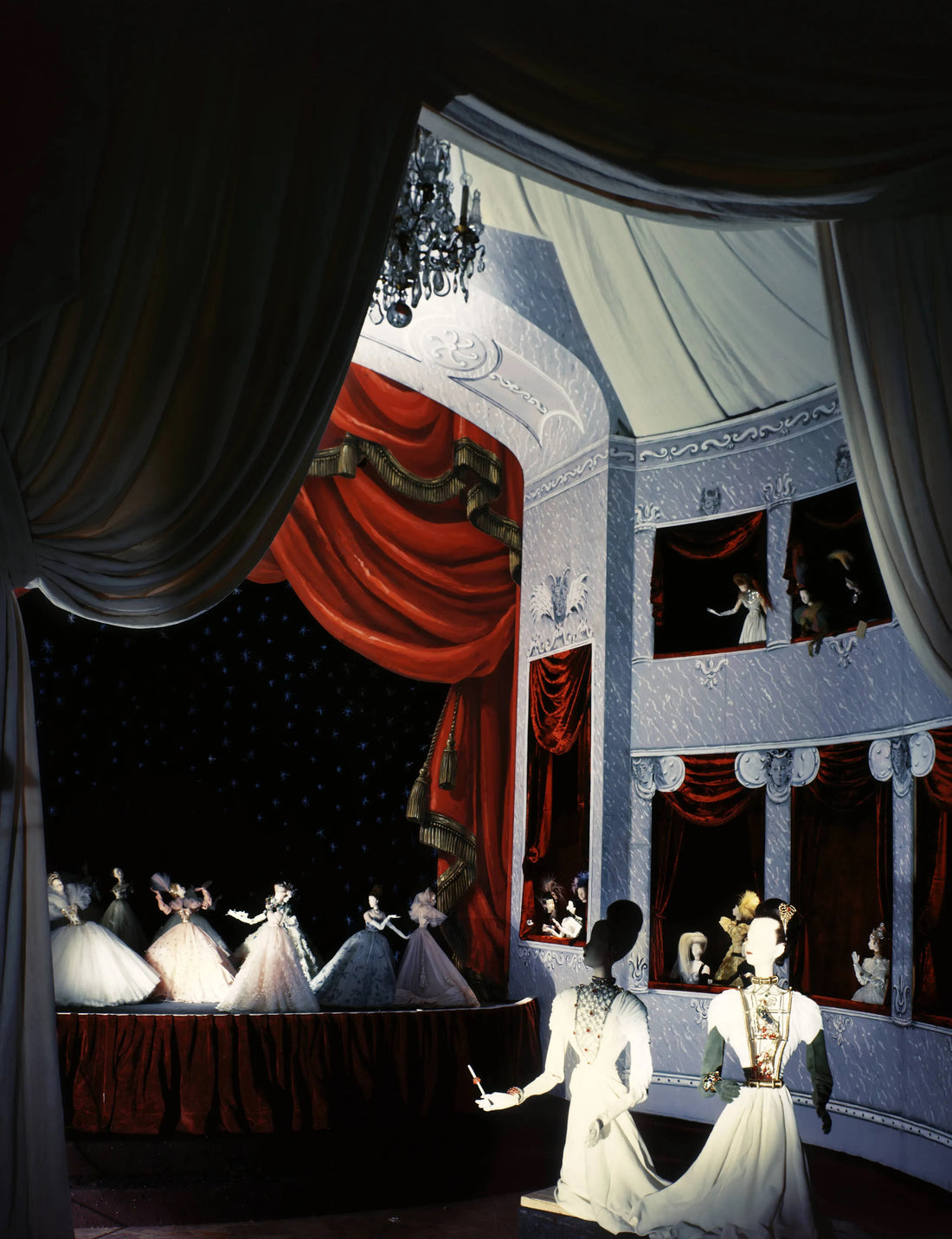During WWII, the haute couture industry saw a serious downturn. Fabric shortages limited production, and the economic decline caused several houses to shut their doors. In 1945, L’Entraide Française sought the help of the Chambre Syndicale de la Couture Parisienne to revitalise France’s soft power. As a result, Robert Ricci and Lucien Lelong, then president of the Chambre, organized the Théatre de la Mode.

Under Christian Bérard’s creative direction, 40 couturiers, 7 furriers, 58 milliners, 8 shoemakers, 8 stylists, 33 jewelers, and 20 hairdressers were called upon to dress 180 wire and plaster dolls. Among the designers were Fath, Balmain, Balenciaga, Rochas, Patou, Lanvin, Grès, Paquin, Carven… Hermès designed the handbags and gloves, and jewelers included Cartier and Van Cleef & Arpels.

The greatest decorators of the time were also commissioned to make theatrical scenery, depicting 14 different scenes of Paris. Among them was Jean Cocteau, who also designed the poster.

These scenes were first exposed in the Musée des Arts Décoratifs in Paris from March 28th to April 29th, 1945. They then began their tour around Europe, followed by North and South America. The theater ended its world tour in 1946, having amassed a total of 100 000 spectators.

More than anything, this endeavor was a French propaganda tool, glorifying the many industries that supply the world of fashion. The Théatre de la Mode was also a way for French couture houses to extend their reach to international clients. It ultimately helped solidify Paris as the fashion capital of the world.

